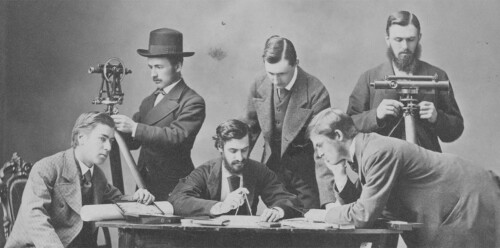
1855
McGill begins offering lectures in Applied Sciences. The series of lectures is started by McGill’s fifth Principal, the renowned geologist William Dawson.
1856
Principal Dawson creates Civil Engineering as an option in Arts in response to the high demand for railroads.
1858
Oliver Gooding graduates from McGill with a degree in Civil Engineering. It is the first engineering degree granted in British North America.
1864
Due to lack of funding and public support, McGill is forced to eliminate engineering from its course offerings.
1871
A special fundraising effort is undertaken to re-establish engineering at McGill. As a result of gifts from Peter Redpath, John H.R. Molson, G. H. Frothingham and other benefactors, $12,000 is committed in subsequent years to ensure the security of the Department of Applied Science and its engineering courses.
The Department of Mining Engineering is founded with Bernard J. Harrington, BA 1869, MA 1895, LLD 1899, as lecturer. Three years later he would become a professor in the Department.
1873
The Department of Applied Science grants its first degrees. Annually from this year forward, one graduate is invited to join the teaching staff. The first division to benefit is Civil and Mechanical.
1874
Metallurgy is introduced as part of the program in Mining Engineering.
1875
Four years after its inception, the Department becomes the Faculty of Applied Science with authority to grant two degrees: Bachelor or Master of Applied Science. The new Faculty offers courses in Civil and Mechanical Engineering, Assaying and Mining, and Practical Chemistry.
1878
Henry T. Bovey is named the first Dean of the Faculty of Applied Science. The Faculty includes four divisions: Civil Engineering, Mechanical Engineering, Mining Engineering, and Practical Chemistry.
1884
A $30,000 endowment from Barbara Scott in memory of her father facilitates the first named Chair in the Faculty: the William Scott Chair of Civil Engineering and Applied Mechanics.
William Graham is the first graduate in Mechanical Engineering at McGill and in Canada.
1885
Thomas Workman bequests $120,000 towards the construction of a new building for the Department of Mechanical Engineering.
1886
The first train on the CPR line arrives in Vancouver from Montreal in July of 1886. The historic engineering feat united the emerging country and allowed for greatly increased transcontinental commerce.
1889
The Faculty of Applied Science receives funds earmarked for its first buildings. At the height of Canada’s industrial revolution, Sir William C. Macdonald recognizes that public funding alone would not allow McGill to meet the demand for qualified engineers. Therefore, he donates $460,000 towards the building’s construction. His gift, along with Thomas Workman’s gift and a $25,000 donation by other benefactors, allows the Faculty to proceed with plans for the construction of a new building for the Department of Mechanical Engineering and the Faculty’s first home: the Macdonald Engineering Building.
The Workman gift also provides for the second named Chair in the Faculty. Prof. Charles A. Carus-Wilson becomes the first Thomas Workman Professor.
1891
Sir William Macdonald’s philanthropy continues to provide for the Faculty. His donations extend to the establishment of the Faculty’s third named Chair. Prof. Charles Carus-Wilson thus becomes the first Macdonald Chair in Electrical Engineering. In addition, Macdonald provides for a Chair in Mining and Metallurgy, a Chair in Chemistry, and three professorships, as well as an $11,000 annual gift. It is estimated that over his lifetime, Macdonald gave more than $13 million to McGill. When he finally consented to being knighted in 1898 (after having refused twice), Queen Victoria described him as “the greatest philanthropist in education in the British Empire.”
125 undergraduates enroll in the Faculty’s first Electrical Engineering courses.
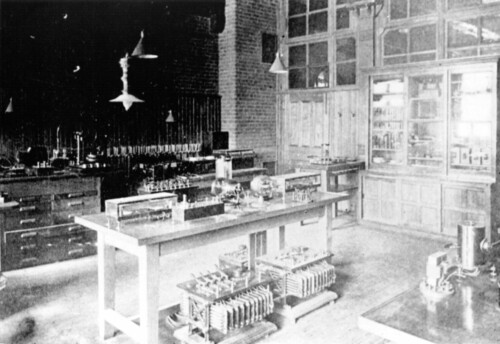
1893
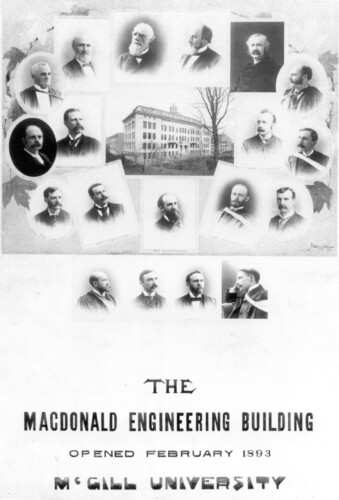
For the first time in the history of McGill, buildings are constructed specifically to house engineers. The Macdonald Engineering Building and Workman Technical Shops were both designed by architect Sir Andrew Taylor and his partner, William Gordon. Featuring a symmetrical Italian Renaissance façade and a Montreal limestone exterior, the five-storey Macdonald building’s vast facilities include an apparatus museum, a library, a forge, a foundry, and a dynamo and engine room.
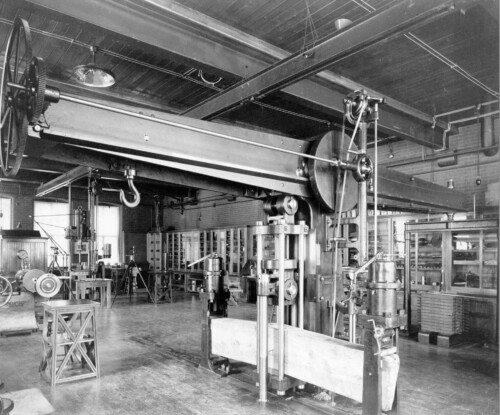
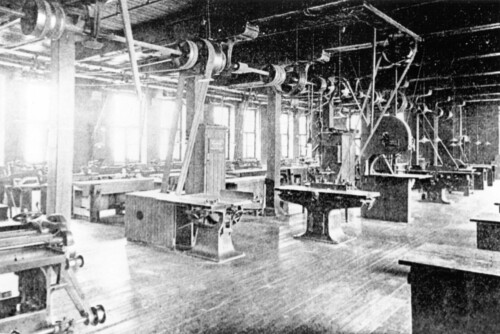
1896
Sir William Macdonald’s endowment enables the establishment of the School of Architecture at McGill, the first architecture school in Canada. The first Chair is filled by the School’s founder, Stewart Henbest Capper.
Construction begins on the Macdonald Chemistry and Mining Building thanks to a second donation of $240,000 by Macdonald. The building (renamed the Macdonald-Harrington Building in the late 1970s), is designed by architect Sir Andrew Taylor after consulting with Bernard J. Harrington, the first Macdonald Professor of Chemistry.
1898
The name of the Engineering degree is changed to Bachelor of Science (BSc) and the degree of Bachelor of Architecture (BArch) is instituted.
The name of the Mining division is changed to Mining and Metallurgy.
1899
The School of Architecture graduates its first class of three students.
